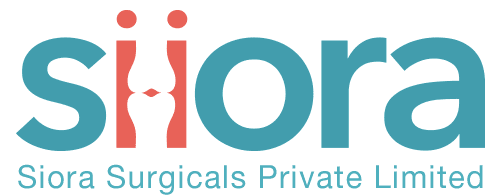Forging
Forging is basically the art of the blacksmith. The metal is heated as well as hammered or squeezed into shape. A die is occasionally used; this is a mold to guide the flow of the metal. Drop forging, the most commonly utilized forging method, means that the piece is formed in a mould comprising of two or more parts in an eccentric press. Forging produces an orientation of the grain flow which makes the metal stronger than before. Many orthopedic implants use this technique for shaping the raw material.
Casting
Casting involves heating the metal to a molten state and pouring it into a mould. In comparison to Forging, the strength of processed product is less and there may be cracks/ blow holes inside if metal flow is improper during casting. Few fracture fixation orthopedic implants, if any, are presently fabricated in this way.
Rolling & Drawing
Rolling (between rollers) as well as drawing (through a hole in a hardened plate) are utilized to form bar and wire.
The material is plastically deformed in the procedure and the grains turn out to be elongated in the direction of deformation. Most of the raw material in form of wire/ rod or Sheet is processed in this way.
Milling
Milling is a basic machining procedure in which material is removed by feeding the work or the workpiece (the core material from which a portion of specified geometry and surface finish is to be fabricated) into a rotating cutter or by means of having the rotating cutter advance into a stationary workpiece. The cutter usually consists of multiple cutting teeth and material may thereby be removed at high rates. Milling offers good surface finish characteristics. This method is abundantly used for manufacturing Plating Systems.
Cold working
Cold working is a finishing procedure employed after the metal has been shaped by hot forging and is somewhat like it, but the work is performed below the recrystallization temperature. The benefits of cold working are a smoother surface finish, uniform grain structure, higher tensile strength, and superior dimension control. Cold working needs more energy compared to hot forging to deform the metal below its recrystallization temperature.
Many Anatomical plates are bent in this manner, particularly which are having low plate thickness.
After forming, metal parts may undergo heat treatment to alter their structure as well as properties. Heat treatment methods used are:
Annealing
Annealing is heating to approximately half the melting point, followed by controlled cooling. The procedure reverses the consequences of work hardening as well as restores ductility and toughness to the metal. Annealing (heat treatment) of a forged piece decreases its internal stresses.
Case hardening
Some products are also treated to cause the outside surface of the rod to be stiffer than the inner core. The benefit is that the harder outer surface will resist indentation while the core is able to absorb more energy.
Machining
Geometric features such as holes and grooves require machining. This can work harden the material surface, but its grain structure remains without any change.
Bone Screws manufacturing is carried out by machining on Lathe/ CNC Lathe.







